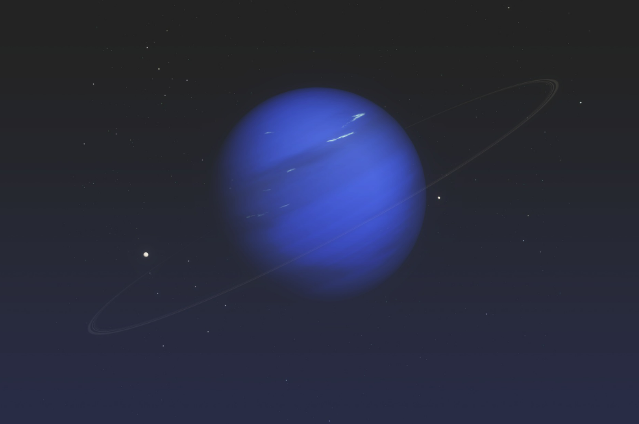
Neptune is one of the most distant planets in our solar system and this enigmatic ice ball has intrigued scientists for numerous years. Multiple discoveries have been made about this outermost planet in our solar system. Neptune was first discovered on the nights of September 23-24 in 1846. Astronomers like John Couch Adams, Urbain Jean Joseph Le Verrier, and Johann Gottfried Galle all independently contributed to uncovering the various aspects related to it. Neptune owns a great distance from the Sun, and thus, its discovery was made operating a telescope. Yet, a telescope was not the only tool utilized to make the finding. The discovery of Neptune was the result of astronomers’ extended research about the outermost part of the solar system and the data available about the orbit of Uranus. A moon orbiting Neptune was also found by astronomers, but however, it then took more than a century to discover the second moon of Neptune.
Recently, NASA has even released some pictures of Neptune’s rings sparkling in a stunningly unique view captured by the James Webb Space Telescope, which is the most robust off-world observatory yet assembled. The recent picture is the most perceptive image of Neptune’s rings.
There are multiple other things about Neptune which are highly fascinating about this unique less-explored planet, so here are some of them.
- Earth-like Gravitational force!
Neptune presumably has a rocky core surrounded by gas and ice. And there’s no way anyone can actually stand on its surface without sinking into the planet. The force of gravity on this planet is exactly as same as the force of gravity humans feel on Earth. - Smallest and Densest Gas Giant!
Neptune has an equatorial radius of only 24,764 km, which makes it smaller than any other known gas planet in the solar system. It may be smaller but it has a massive density as compared to some other planets. With 1.638 g/cm3. Neptune is also one of the densest gas planets in our solar system. - The rain of diamonds!
Scientists have discovered that the atmosphere created at Neptune creates diamonds. Results of computer simulation have indicated that the temperature and pressure at Neptune reach such a magnitude that it decomposes certain elements like carbon and hydrogen and eventually turns into diamond crystals, falling to the core of the planet. - Neptune is the coldest!
The temperatures on Neptune can dip down to 51.7 kelvin or -221.45 degrees Celcius. And that is almost three times the coldest temperature ever recorded on Earth. Such low temperatures are enough to make any unprotected humans to turn into instant freeze in seconds! - The Strongest winds of all!
The winds of Neptune are the strongest with winds that go up to 2,100 km/hour. Scientists are still studying and puzzled how an icy cold planet like Neptune can get its cloud tops to move so rapidly.
. . .
Reference:

